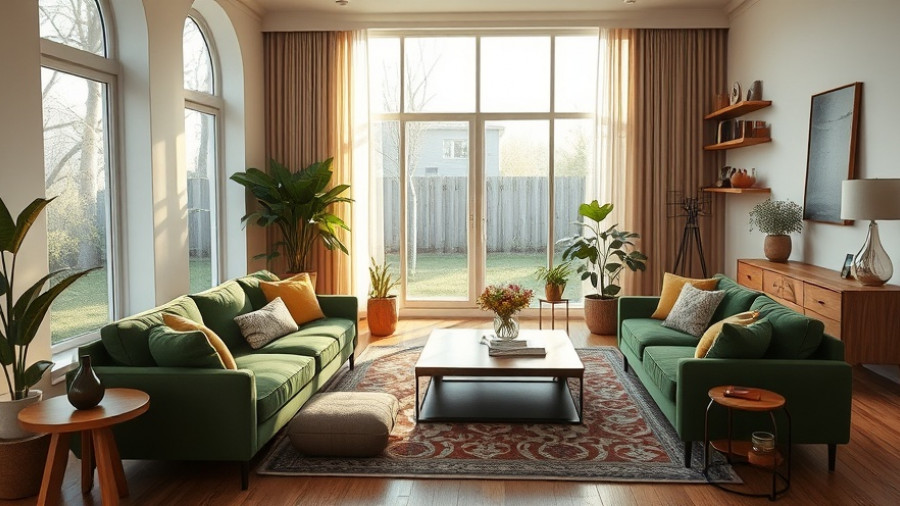
Caught in a Design Fiasco: The Price of Perfection
In a quest for the perfect living room accent, I stumbled into a costly trap: a ficus tree that brought a wave of regret instead of joy. It all began in 2014 when I found myself swept away by the lush allure of this expensive plant, priced around $1,200, at Mickey Hargitay Plants in Los Angeles—a well-known destination for exotic indoor greenery. As a proud homeowner in sunny California, I wanted my space to exude warmth and vibrancy, especially since my house was about to be featured in a magazine. Little did I know, I was about to embark on an arduous journey with this botanical beauty that would last more than a decade.
Lessons in Plant Care and Responsibility
Owning a plant is much like maintaining a relationship; it requires dedication, understanding, and a willingness to learn. My ficus tree initially brought life to my home, but as time passed, the leaves began to fall, signaling trouble. As I struggled to understand its needs, I felt like I was in over my head. I contacted plant experts, only to discover pesky aphids had invaded. Armed with knowledge, I dove into plant care but soon discovered that the sap oozing from the tree had turned my lovely living space into a sticky situation.
From Splurge to Sour: The Consequences of Neglect
My ficus became a burden, not just due to its care but because of the mess it left behind. The sap ruined furniture and hardwood floors, causing me endless stress and frustration. I remember vividly how my son Charlie couldn't crawl near it, forcing us to avoid a part of our home that should have been a delightful family space. If only I had respected the commitment involved in plant ownership—or thought twice about my extravagant purchase. As I navigated motherhood and design, it became clear: not everything that looks beautiful in magazines translates to reality.
Reflecting on the Cost of Aesthetic Decisions
In retrospect, I realize this journey teaches more than just plant care; it’s a lesson in values and choices. Spending lavishly to enhance our lives should not result in chaos and despair. Instead, we may consider options that align better with our lifestyles and capacity for responsibility. While I still admire the beauty of that ficus, my experience compels me to prioritize practicality over aesthetics.
Designing Guilt-Free Spaces: Exploring Alternatives
For anyone in the market for indoor plants, I wholeheartedly recommend understanding your rhythm of care before making a large investment. Consider low-maintenance plants that can thrive even in less-than-perfect conditions—like succulents or pothos. They provide beauty without demanding constant attention, allowing you to indulge in design without the guilt or hassle.
Embracing DIY Solutions and Home Management
As we navigate the challenges of homeownership, let these experiences motivate us to explore DIY solutions. Whether it’s finding eco-friendly cleaning products or learning home maintenance tips, taking small steps can prevent larger issues from snowballing into overwhelming burdens. Don’t forget to enlist the help of knowledgeable resources—join local gardening clubs or participate in community workshops to elevate your knowledge in maintaining and caring for your living environment.
The Power of Community and Sharing
Throughout my experience, I’ve realized the immense value in sharing our stories—our victories and failures. Many homeowners have faced similar dilemmas, and by discussing these moments openly, we can learn and grow together. Whether you’re just starting your plant collection or contemplating a major home renovation, remember that learning from others' mistakes can guide your decisions and save you from costly pitfalls.
So, as I reflect on my costly design splurge, I encourage you to take a thoughtful approach to your own home and the elements you choose to inhabit it with. The focus should always be on creating a space that elevates both your life and spirit, minus the drama. Here’s to designing our homes with care and understanding!
As you work towards making informed design choices in your home, consider reaching out to local experts who can provide valuable insights. Join community groups to enhance your plant knowledge and foster deeper connections in your neighborhood. Your next design journey could be both inspiring and fulfilling!
 Add Row
Add Row  Add
Add 




Write A Comment